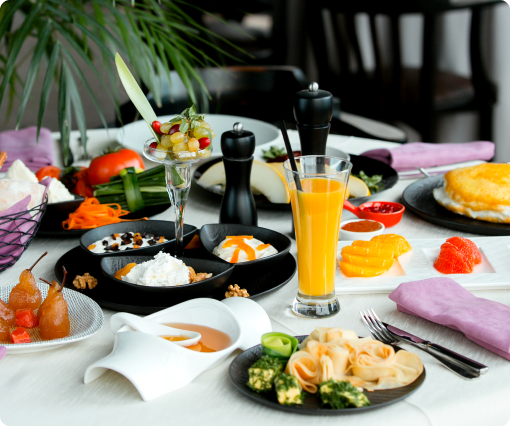Optimized F&B menu for a luxury hospitality chain to maximize revenue

Overview
A luxury hospitality chain that manages a portfolio of hotels, resorts, jungle safaris, palaces, spas, and in-flight catering services wanted to optimize its food and beverages (F&B) menu to increase sales and improve guest loyalty.
TransOrg analyzed guests’ transactions on F&B by using advanced analytics techniques and machine learning models to:
-
- Find opportunities of bundling, cross-selling and up-selling menu items as combo deals and to prepare a recommendation guideline for the servers to suggest items to customers while dining.
- Find insights in revenue and quantity trends and suggest actionable strategies for increasing revenues, reducing costs and optimizing menu pricing.
- Identify opportunities of restructuring menu layout with reference to transactions.
Identify opportunities to create offers based on the time of transaction and seasonality.
The project commenced with a premium hotel property situated in one metro city and eventually scaled up the solution to other hotel properties across India.
Solution
TransOrg analyzed the Point of Sales (POS) data for a period of one year comprising of approximately 30,000 transactions and 90,000 ordered items.
Transactional analysis was done on multiple parameters such as:
- Frequency of item ordered vs. item name
- Revenue of item ordered vs. item name
- Overall revenue vs. DOW, TOM, and season*
- Revenue change per item vs. DOW, TOM, and season.
- Average, Overall and Daily revenue of top items vs. DOW, TOM, and season.
**DOW: Day of the week (weekdays: Mon-Thu and weekend: Fri-Sun); TOM: Time of the meal (Breakfast, Lunch and Dinner); Season: Summer, winter, spring, autumn and monsoon.
Market Basket Analysis:
TransOrg used the Apriori association method to find frequent item sets and derived association rules to uncover meaningful correlations between different products according to their co-occurrence in a data set. The following measures were used to evaluate the strength of association:
- Support for the rule indicates its outcome in terms of overall size
- Confidence determines the operational usefulness of a rule
- Lift ratio indicates how efficient is the rule in finding consequences, compared to random selection of transaction

Impacts
Increased revenues through combos and in-demand items
Targeted campaigns to up-sell and cross-sell
In-depth understanding of top revenue generating items across seasons and days
Dishes with regional names and restaurant specific names have contributed significantly to revenue.
Client earns highest revenues during summer.
Buffet breakfast is the revenue driver for weekdays in all seasons except the monsoon.
Product R dropped out of Top fifteen revenue contributors in Autumn and Winter.
In Autumn, seasonal products P and Q that are added to menu for 15 days contributed approximately USD 7,000.
Spikes in order frequency align with suggestions by food aggregator apps such as Swiggy or Zomato.
Demand for products X, Y and Z surge in summer.
Combo X has negligible demand in monsoon.

